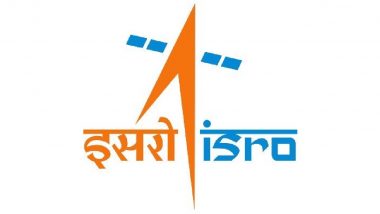ISRO Successfully Conducts Flight Acceptance Hot Testing of CE20 Cryogenic Engine for LVM-M6 Mission
 The Indian Space Research Organisation (ISRO) has successfully conducted the flight acceptance hot testing of the cryogenic engine for the LVM-M6 mission, the space agency said. The hot testing is part of the acceptance process for the flight of cryogenic engines for every mission. “On March 14, 2025, ISRO successfully conducted the flight acceptance hot testing of the cryogenic engine identified for the sixth operational mission of the LVM3 launch vehicle (LVM-M6) at ISRO Propulsion Complex (IPRC), Mahendragiri,” the space agency said.
The Indian Space Research Organisation (ISRO) has successfully conducted the flight acceptance hot testing of the cryogenic engine for the LVM-M6 mission, the space agency said. The hot testing is part of the acceptance process for the flight of cryogenic engines for every mission. “On March 14, 2025, ISRO successfully conducted the flight acceptance hot testing of the cryogenic engine identified for the sixth operational mission of the LVM3 launch vehicle (LVM-M6) at ISRO Propulsion Complex (IPRC), Mahendragiri,” the space agency said.
Notably, hot tests for the indigenous cryogenic engine (CE20) used in the Cryogenic Upper Stage of LVM3 were so far performed at the High-Altitude Test (HAT) facility at IPRC. At IPRC, vacuum conditions are simulated with complex installations, limiting the maximum hot test duration to 25 seconds.
However, in the new test, the engine was tested for a longer duration of 100 seconds for the first time using an innovative Nozzle Protection System under non-vacuum conditions. “This test method significantly reduces the setup time and effort required for the flight acceptance testing of a cryogenic engine, which in turn helps faster delivery of cryogenic stages for space missions,” ISRO said.
“Performance of the CE20 engine met all the test objectives, and the parameters closely matched predictions during the entire duration of the test,” it added. Further, the space agency aims to integrate the engine into the Cryogenic Upper Stage of the launch vehicle for the LVM3-M6 mission, scheduled during the second half of 2025.
ISRO Chairman Dr. V. Narayanan highlighted that Indian scientists developed cryogenic technology independently despite facing restrictions from multiple countries. "A major achievement is that we have developed the C32 cryogenic propulsion system, and all should know that cryogenic technology was denied to India by other countries, and we took baby steps. Today, we have developed three cryogenic stages," Narayanan said.
"We have successfully tested it for 100 seconds. This is yet another technology that many countries do not have. Even 20 years ago, it was a very hard technology, but today, it is for ISRO," he added.
Meanwhile, ISRO confirmed the successful undocking of the Space Docking Experiment (SpaDeX) mission. With this, India has joined an elite group of four nations that have successfully demonstrated the complex technology of satellite docking and undocking, Narayanan said.
Recalling the preparations for the mission, Narayanan mentioned that they conducted over 120 computer simulations to ensure precision. The SpaDeX mission lifted off aboard the PSLV-C60 rocket from Sriharikota on December 30.
On January 16, the two satellites—SDX-01 (Chaser) and SDX-02 (Target)—successfully docked together, demonstrating ISRO’s space docking ability. "It was rotating as a single body. Then, we wanted to separate it, the undocking process, for which we carried out extensive studies and analysis. We made a simulator and conducted 120 simulations, as there should not be any mistakes. On March 13, at 9:20 am, in the first attempt itself, we succeeded in the undocking process," Narayanan said.
The undocking process included the successful extension of SDX-2, the planned release of Capture Lever 3, and the disengagement of the Capture Lever in SDX-2. After these maneuvers, the decapture command was issued in both SDX-1 and SDX-2, leading to the successful separation of the satellites, ISRO said.
ISRO Logo. Credits: X/@isro
Source: Latesly


